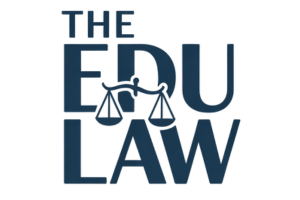Student behavior outside school grounds has raised significant questions in modern education, especially with online platforms acting as new stages for expression. Incidents occurring at home, during weekends, or on social media have entered the disciplinary spotlight.
K-12 schools and universities must tread carefully, especially when trying to maintain order while respecting individual liberties. The legal context varies sharply depending on school type, public vs. private, and student level.
Examining legal doctrine, constitutional protections, and case law helps frame the debate around when discipline is justified.
Legal Frameworks and Key Considerations
Determining how far a school’s disciplinary reach extends requires a close look at legal foundations that govern student rights and institutional authority. School administrators must evaluate each incident against constitutional protections, state laws, and long-standing legal doctrines.
Two major elements play a central role in this analysis: the concept of in loco parentis and the First Amendment.
These concepts guide what conduct schools may address and what falls outside their control.
In Loco Parentis and the School’s Jurisdiction
In loco parentis gives K–12 educators limited authority to act as temporary guardians during school activities. The authority allows teachers and administrators to supervise student behavior during school hours and events directly related to school functions.
However, off-campus actions generally remain outside this scope. Courts have consistently reinforced the idea that schools do not serve as surrogate parents once students leave the educational setting.
Disciplinary action for off-campus behavior demands a strong connection to school safety or student welfare. Vague references to general school interest or reputational concerns typically fail to justify punishment.
For example, if a student engages in inappropriate conduct on a weekend at a private gathering, and no direct school connection can be drawn, suspension or other penalties often invite legal challenges. Schools must show clear and specific impacts on campus operations or peer relationships.
- Authority ends at the school gate unless a direct tie to school safety or disruption exists.
- Weekend or evening conduct requires documented proof of school-related consequences.
- Courts evaluate context, impact, and relevance to school activities, not just moral judgment.
First Amendment Rights and Free Speech

Public school students do not leave their constitutional rights at the classroom door. Among these rights, free speech occupies a central place.
Public institutions, as government entities, cannot impose discipline based on mere disagreement with student expression.
Only when speech leads to substantial disruption or invades the rights of others can discipline be justified.
Off-campus speech, especially on social media, receives stronger protection. Even speech that may be offensive or controversial is often shielded if it occurs outside school settings and does not cause concrete harm to the educational environment.
Snapchat posts, TikTok videos, or Instagram comments made on personal devices and outside school hours usually fall under personal expression. Unless direct threats or harassment are involved, school intervention becomes legally risky.
- Schools must identify a substantial disruption to classes or student safety.
- Mere discomfort or disagreement with a student’s opinion is not grounds for discipline.
- Online speech requires a connection to school impact, such as targeted bullying or threats.
The Landmark Case: Mahanoy Area School District v. B.L. (2021)
A high school student, frustrated by not making the varsity cheerleading team, posted a photo on Snapchat using profanity directed at the school and its activities. Shared on a weekend and outside school property, the post quickly circulated among students.
School officials responded by suspending the student from the junior varsity cheerleading squad.
Legal proceedings followed, starting in lower courts and eventually reaching the U.S. Supreme Court.
Central to the case was whether the school had the authority to discipline a student for off-campus speech that did not occur during school hours or through school channels.
@professormazie Mahanoy School District v. BL live on C-SPAN radio on 4/28 #scotus #cheerleading #fyp #foryoupage #firsttiktokvideo #lawtiktok #supremecourt ♬ original sound – professormazie
Supreme Court Ruling
The Court ruled in favor of the student, noting that her speech did not cause a substantial disruption to the school environment.
Justices emphasized that off-campus speech receives heightened protection, especially when it takes place on personal devices and social platforms unrelated to school operations.
Officials cannot regulate all student speech outside of school. They must demonstrate a direct and serious threat to school safety or a clear violation of others’ rights. Mere offense or embarrassment does not justify punishment.
Implications for K-12 Schools
While the Court ruled in favor of student rights, it also acknowledged certain exceptions.
- Severe and targeted bullying or harassment that affects a student’s safety or ability to learn.
- Credible threats directed at staff or students.
- Online activities that tie directly into school safety or assignments.
Educators must now evaluate speech through a dual lens: constitutional rights and school impact.
Reaction must be measured, legally sound, and documented to withstand scrutiny.
School Districts’ Authority: Practical Guidance
School districts face a difficult task when deciding how to handle off-campus behavior. A legal advice stresses the importance of establishing a clear connection between student conduct and school disruption.
Administrators must not only react but also prove that a student’s off-campus actions caused a significant and measurable impact on the school environment.
A crucial concept here is the “nexus” requirement. If a fight occurs in a parking lot off school grounds, for instance, and causes tension or safety concerns among students the next school day, that incident may fall under school jurisdiction. Without such a link, attempts at discipline often lack legal foundation.
Some exceptions exist. In states like Michigan, criminal sexual conduct may trigger mandatory school response, even if it occurs off-campus. When such incidents involve students, school officials may have a legal obligation to protect the educational environment and comply with specific statutes.
Schools must also document their reasoning and decision-making process carefully. Public pressure or vague concerns cannot justify punishment. Policies should be reviewed regularly, and disciplinary procedures must align with constitutional standards and state laws.
Careful, deliberate action supported by legal consultation ensures that schools protect student safety without overstepping authority.

University Jurisdiction and Off-Campus Conduct
University disciplinary systems operate in a different context compared to K–12 education. Students are legally adults, and institutions, especially public ones, must balance behavioral expectations with legal obligations tied to constitutional rights and federal education law.
Conduct that occurs off campus can still carry consequences, but schools must be precise in defining when and how jurisdiction applies.
- Conduct codes
- Title IX applications
- Limitations
Student Conduct Codes
Disciplinary authority in higher education comes primarily through student conduct codes. These codes serve as contractual agreements between students and institutions.
When enrolling, students agree to abide by specific behavioral expectations, which often extend off campus if the behavior disrupts university functions or impacts other students.
Private and public universities vary in enforcement powers:
Public universities must uphold constitutional rights such as free speech and due process.
Private universities operate with more flexibility, guided by internal values and contractual fairness.
- Hazing at unaffiliated fraternity houses that leads to injury or harassment.
- Physical violence during off-campus student events that spills into academic life.
- Discriminatory conduct on social media that targets peers and affects class dynamics.
Universities must be ready to show how the conduct in question creates disruption or safety concerns that tie directly to campus life or educational access.
Application of Title IX
Title IX extends university responsibilities in cases involving sex-based misconduct.
Even if events occur off campus, schools are required to respond when such incidents limit a student’s ability to participate in education.
A delayed or inadequate response can result in legal liability and federal investigation.
- Applicable scenarios include sexual assault, stalking, and harassment at off-campus housing or parties.
- Institutional response must be timely, impartial, and focused on safety and fairness.
- Failure to act could impact federal funding, provoke legal action, and damage reputation.
Administrators must prioritize the well-being of all students involved, evaluating risks and identifying repeated patterns when necessary. Measures may include no-contact orders, accommodations, or changes to class schedules, even if law enforcement also investigates the case.
Limitations
Not every off-campus incident falls under university jurisdiction. When events lack a campus connection or do not interfere with educational functions, disciplinary action may exceed lawful authority.
Universities are not legal arbiters of students’ personal lives and must focus resources on matters that affect institutional obligations.
- Purely personal disputes between students that never impact campus activity.
- Criminal charges involving off-campus arrests with no bearing on classroom behavior or peer safety.
- Speech or expression shared outside university spaces that does not target or harass students or faculty.
Due process protections are essential. Students facing disciplinary proceedings must be granted fair notice, an opportunity to respond, and access to an unbiased decision-making process. Institutions should ensure policies are not vague or inconsistently enforced.
To remain effective and lawful, disciplinary action must follow structured policies, apply equally to all students, and avoid responses rooted in public pressure or assumption.
Final Thoughts
Disciplining students for behavior outside school grounds involves careful consideration of rights, responsibilities, and legal precedent.
K–12 schools must weigh off-campus actions against potential disruption, particularly in cases involving bullying, threats, or school-related online activity.
Universities must evaluate off-campus incidents through student conduct codes and federal obligations such as Title IX, always considering impact on access to education.

